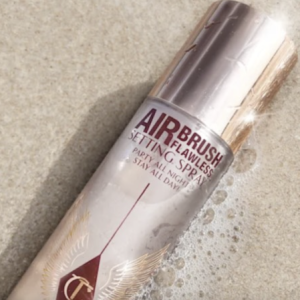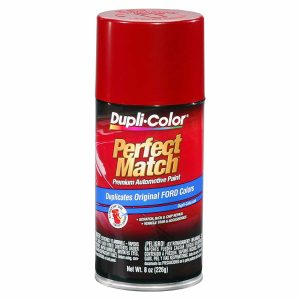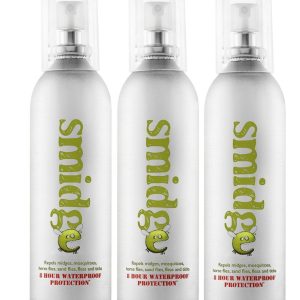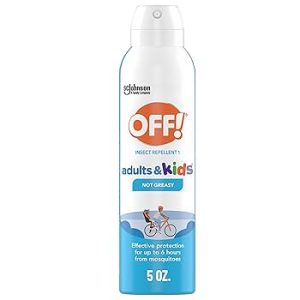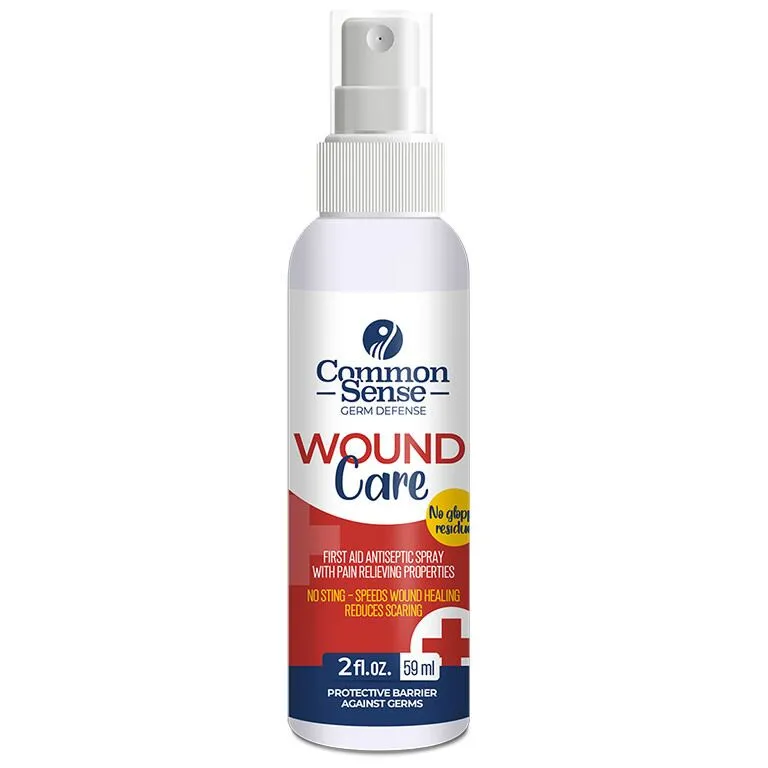
Antiseptic spray has become an essential component of modern first aid kits and healthcare routines, offering quick and effective protection against harmful bacteria and infections. Whether you’re treating minor cuts, preparing for medical procedures, or maintaining hygiene in healthcare settings, understanding how to properly use antiseptic spray can make a significant difference in preventing complications and promoting faster healing.
In today’s world, where infection control has never been more important, antiseptic sprays provide a convenient, touchless method of disinfection that reduces the risk of cross-contamination while delivering powerful antimicrobial protection. This comprehensive guide will explore everything you need to know about antiseptic spray, from its scientific mechanisms to practical applications in everyday healthcare scenarios.
What is Antiseptic Spray and How Does It Work?
Antiseptic spray is a topical antimicrobial solution designed to kill or inhibit the growth of bacteria, viruses, fungi, and other microorganisms on living tissue. Unlike disinfectants, which are used on inanimate objects, antiseptic solutions are specifically formulated to be safe for direct application on skin and wounds.
The primary mechanism of action for most antiseptic sprays involves disrupting the cellular structure of microorganisms. Common active ingredients include alcohol-based compounds (typically ethanol or isopropanol), povidone-iodine, benzalkonium chloride, and hydrogen peroxide. Each of these ingredients works differently to eliminate pathogens:
Alcohol-based antiseptic sprays work by denaturing proteins and dissolving lipid membranes in bacterial cell walls, effectively destroying the microorganism’s ability to survive and reproduce. These formulations typically contain between 60-90% alcohol concentration, which has been proven to be the most effective range for antimicrobial activity. The rapid evaporation of alcohol also helps cool the skin, providing additional comfort during application.
Povidone-iodine based sprays release free iodine slowly, which penetrates microbial cell walls and oxidizes essential cellular components. This broad-spectrum action makes iodine-based antiseptic spray particularly effective against a wide range of pathogens, including antibiotic-resistant bacteria. The sustained release mechanism also provides longer-lasting antimicrobial protection compared to alcohol-based alternatives.
Types of Antiseptic Spray and Their Specific Applications
Medical-Grade Antiseptic Spray
Medical-grade antiseptic sprays are formulated to meet strict pharmaceutical standards and are commonly used in hospitals, clinics, and professional healthcare settings. These products typically contain higher concentrations of active ingredients and undergo rigorous testing for efficacy and safety.
Key characteristics of medical-grade formulations:
- Sterile manufacturing processes
- Validated antimicrobial efficacy
- Biocompatibility testing for wound healing
- Extended shelf life stability
- Professional packaging and labeling
Healthcare professionals rely on medical-grade antiseptic spray for pre-surgical skin preparation, wound irrigation, and equipment decontamination. Studies have shown that proper use of medical-grade antiseptic solutions can reduce surgical site infections by up to 65%, making them indispensable tools in infection prevention protocols.
Consumer Antiseptic Spray Products
Consumer-grade antiseptic sprays are designed for home use and general first aid applications. While they contain lower concentrations of active ingredients compared to medical-grade products, they still provide effective antimicrobial protection for minor wounds and everyday hygiene needs.
Popular consumer antiseptic spray formulations include:
- Alcohol-based sprays (60-70% concentration)
- Benzalkonium chloride solutions (0.1-0.13%)
- Hydrogen peroxide formulations (3% concentration)
- Natural antiseptic blends (tea tree oil, eucalyptus)
These products are typically available over-the-counter and are formulated to be gentle enough for frequent use while maintaining effective antimicrobial properties. The convenience of spray application makes them particularly popular for treating children’s minor injuries and for use in schools, offices, and recreational settings.
Benefits and Advantages of Using Antiseptic Spray
Rapid Application and Coverage
One of the primary advantages of antiseptic spray over traditional liquid antiseptics is the speed and ease of application. The spray mechanism allows for quick, even coverage of irregular wound surfaces without the need for cotton swabs or gauze pads. This is particularly beneficial when treating:
- Large surface areas with multiple abrasions
- Hard-to-reach locations on the body
- Contaminated wounds where touching should be minimized
- Emergency situations requiring immediate treatment
Research conducted by the American Journal of Emergency Medicine found that spray application of antiseptic solutions reduced treatment time by an average of 40% compared to traditional application methods, while maintaining equivalent antimicrobial efficacy.
Reduced Cross-Contamination Risk
The touchless nature of antiseptic spray application significantly reduces the risk of introducing additional pathogens to the wound site. Traditional methods of applying liquid antiseptics often require direct contact with applicators, which can harbor bacteria and increase infection risk.
Benefits of touchless application include:
- Elimination of secondary contamination from applicators
- Reduced pain and discomfort during treatment
- Improved patient compliance, especially with children
- Enhanced sterility in clinical settings
Extended Shelf Life and Stability
Modern antiseptic spray formulations are engineered for stability and extended shelf life, making them reliable components of first aid kits and emergency preparedness supplies. The pressurized container system protects the active ingredients from air exposure and contamination, maintaining potency for extended periods.
Common Active Ingredients in Antiseptic Spray
Ethanol and Isopropanol
Alcohol-based antiseptic sprays remain the most widely used formulations due to their broad-spectrum antimicrobial activity and rapid action. Ethanol (ethyl alcohol) and isopropanol (isopropyl alcohol) are the two primary alcohols used in antiseptic formulations.
| Alcohol Type | Optimal Concentration | Antimicrobial Spectrum | Onset of Action |
|---|---|---|---|
| Ethanol | 70-80% | Bacteria, viruses, fungi | 15-30 seconds |
| Isopropanol | 60-70% | Bacteria, viruses, some fungi | 10-15 seconds |
Ethanol-based antiseptic spray is particularly effective against enveloped viruses, including influenza and coronaviruses, making it valuable for general hygiene and infection prevention. The rapid evaporation of ethanol also helps prevent skin irritation and promotes faster drying of treated areas.
Isopropanol formulations tend to have slightly faster antimicrobial action but may cause more skin drying with frequent use. Many commercial antiseptic sprays combine both alcohols to optimize antimicrobial effectiveness while minimizing skin irritation.
Povidone-Iodine
Povidone-iodine is a stable complex that slowly releases free iodine, providing sustained antimicrobial activity. This makes povidone-iodine based antiseptic spray particularly effective for wound care applications where prolonged protection is desired.
Advantages of povidone-iodine antiseptic spray:
- Broad-spectrum activity against bacteria, viruses, fungi, and spores
- Sustained antimicrobial effect lasting several hours
- Low risk of developing bacterial resistance
- Effective in the presence of organic matter (blood, pus)
However, povidone-iodine formulations are contraindicated for individuals with iodine allergies or thyroid disorders, and they may cause temporary skin staining that fades over time.
Benzalkonium Chloride
Benzalkonium chloride is a quaternary ammonium compound that provides effective antimicrobial activity while being gentler on skin than alcohol-based formulations. This makes benzalkonium chloride antiseptic spray particularly suitable for sensitive skin applications and frequent use scenarios.
The mechanism of action involves disrupting microbial cell membranes, leading to cell death. Benzalkonium chloride formulations typically maintain antimicrobial activity for longer periods after application compared to alcohol-based products, providing extended protection.
Proper Usage and Application Techniques
Step-by-Step Application Process
Proper application of antiseptic spray is crucial for maximizing effectiveness while minimizing the risk of adverse reactions. The following protocol should be followed for optimal results:
Pre-application preparation:
- Clean hands thoroughly with soap and water or hand sanitizer
- Assess the wound for debris, foreign objects, or signs of serious injury
- Stop any bleeding using direct pressure if necessary
- Remove loose debris with sterile tweezers if safe to do so
Application technique:
- Hold the spray bottle 4-6 inches from the treatment area
- Apply an even coat covering the entire wound and surrounding skin
- Allow the antiseptic to air dry completely (typically 30-60 seconds)
- Reapply if necessary for heavily contaminated wounds
- Cover with appropriate dressing if required
The distance from the skin is important because spraying too close can cause discomfort due to the cooling effect of propellants, while spraying too far may result in uneven coverage and reduced effectiveness.
Dosage and Frequency Guidelines
The appropriate frequency of antiseptic spray application depends on several factors, including the type of wound, level of contamination, and individual healing characteristics. General guidelines include:
For minor wounds:
- Apply 2-3 times daily during the initial healing phase
- Reduce frequency as healing progresses
- Discontinue use once the wound is fully epithelialized
For contaminated wounds:
- Apply immediately after injury and thorough cleaning
- Reapply every 4-6 hours for the first 24-48 hours
- Monitor for signs of infection and adjust frequency as needed
For pre-procedural skin preparation:
- Apply single application and allow to dry completely
- Reapply if the area becomes contaminated before procedure
- Follow specific institutional protocols in healthcare settings
Areas of Application and Limitations
Antiseptic spray is suitable for use on most external body surfaces, but certain areas require special consideration or should be avoided entirely:
Appropriate application sites:
- Minor cuts, scrapes, and abrasions
- Intact skin prior to injections or procedures
- External surfaces around wounds
- Non-mucous membrane areas
Areas requiring caution:
- Deep wounds that may require professional medical evaluation
- Areas near eyes where spray drift could cause irritation
- Broken or severely damaged skin that may be overly sensitive
- Large surface areas where systemic absorption could be a concern
Contraindicated areas:
- Internal body cavities or mucous membranes
- Severely burned skin without medical supervision
- Known allergic reaction sites to specific ingredients
Safety Considerations and Precautions
Potential Side Effects and Allergic Reactions
While antiseptic spray is generally safe for topical use, some individuals may experience adverse reactions. Understanding these potential effects is important for safe usage:
Common side effects:
- Mild skin irritation or redness at application site
- Temporary stinging or burning sensation upon application
- Skin drying with frequent use of alcohol-based formulations
- Contact dermatitis in sensitive individuals
Signs of allergic reaction:
- Severe redness or swelling extending beyond the application area
- Persistent itching or burning that doesn’t subside
- Rash or hives developing after application
- Difficulty breathing or systemic symptoms (rare but serious)
If any signs of allergic reaction occur, discontinue use immediately and seek medical attention if symptoms are severe or persistent. Individuals with known allergies to specific antiseptic ingredients should carefully read product labels and consult healthcare providers before use.
Proper Storage and Handling
Maintaining the effectiveness and safety of antiseptic spray requires proper storage and handling practices:
Storage requirements:
- Store at room temperature (68-77°F/20-25°C)
- Avoid exposure to direct sunlight or heat sources
- Keep away from open flames due to flammable propellants
- Store in original container to maintain sterility
- Check expiration dates regularly and replace expired products
Handling precautions:
- Avoid contact with eyes during application
- Use in well-ventilated areas to prevent inhalation of vapors
- Keep out of reach of children when not in use
- Do not puncture or incinerate pressurized containers
Drug Interactions and Contraindications
Certain medications and medical conditions may interact with antiseptic spray ingredients or increase the risk of adverse reactions:
Potential interactions:
- Topical medications applied to the same area may have altered absorption
- Blood thinning medications may increase bleeding risk if wounds are manipulated
- Immunosuppressive drugs may affect wound healing response
Medical contraindications:
- Known hypersensitivity to any antiseptic ingredients
- Severe renal or hepatic impairment (for products with systemic absorption potential)
- Thyroid disorders (for iodine-containing products)
- Pregnancy and breastfeeding (consult healthcare provider)
Comparing Antiseptic Spray to Other Wound Care Products
Antiseptic Spray vs. Liquid Antiseptics
The choice between spray and liquid antiseptic formulations often depends on the specific application requirements and user preferences:
| Feature | Antiseptic Spray | Liquid Antiseptic |
|---|---|---|
| Application ease | Touchless, rapid coverage | Requires applicator, more precise |
| Coverage area | Large, irregular surfaces | Small, targeted areas |
| Contamination risk | Minimal cross-contamination | Higher risk with reusable applicators |
| Cost effectiveness | Higher initial cost, longer shelf life | Lower initial cost, may require accessories |
| Portability | Compact, self-contained | May require additional supplies |
Antiseptic spray excels in emergency situations and when treating children or anxious patients who may be sensitive to direct contact. The ability to apply antiseptic without touching the wound area reduces pain and anxiety while maintaining sterility.
Antiseptic Spray vs. Antiseptic Wipes
Antiseptic wipes offer a convenient alternative for certain applications, but they have distinct advantages and limitations compared to spray formulations:
Advantages of antiseptic spray over wipes:
- Better coverage of irregular or hard-to-reach areas
- No physical contact with sensitive wound surfaces
- Longer shelf life when stored properly
- More economical for frequent use
- Suitable for larger areas without multiple wipes
Advantages of antiseptic wipes:
- Mechanical cleaning action removes debris and contaminants
- Controlled application amount with each wipe
- No risk of overspray or waste
- Convenient for travel without liquid restrictions
- Combined cleaning and antiseptic action
Integration with Comprehensive Wound Care
Antiseptic spray works best as part of a comprehensive wound care approach that may include multiple products and techniques:
Complete wound care protocol:
- Initial assessment and bleeding control
- Wound irrigation with saline or clean water
- Antiseptic spray application for antimicrobial protection
- Appropriate dressing selection based on wound characteristics
- Regular monitoring and dressing changes
- Professional evaluation for complications or slow healing
This integrated approach maximizes healing potential while minimizing infection risk and other complications.
Choosing the Right Antiseptic Spray for Your Needs
Factors to Consider When Selecting Products
Selecting the most appropriate antiseptic spray requires careful consideration of several factors:
Intended use and application:
- Frequency of use (daily hygiene vs. emergency treatment)
- User age and sensitivity (children, elderly, sensitive skin)
- Wound type and severity (minor scrapes vs. deeper cuts)
- Environmental conditions (humid climates, outdoor activities)
Active ingredient preferences:
- Alcohol-based formulations for rapid action and broad spectrum coverage
- Iodine-based products for sustained antimicrobial activity
- Benzalkonium chloride for sensitive skin applications
- Natural alternatives for those preferring plant-based ingredients
Practical considerations:
- Container size and portability for travel or home use
- Spray mechanism quality and ease of operation
- Cost per application and overall value
- Availability and brand reputation
Professional vs. Consumer Grade Products
The decision between professional and consumer grade antiseptic spray depends on the intended use and required level of antimicrobial efficacy:
Professional grade advantages:
- Higher concentration of active ingredients
- Validated efficacy against specific pathogens
- Sterile manufacturing and quality control
- Regulatory approval for medical use
- Extended shelf life and stability
Consumer grade advantages:
- Lower cost and wider availability
- Gentler formulations for routine use
- Smaller package sizes for personal use
- User-friendly packaging and instructions
- Over-the-counter accessibility
For most household first aid applications, consumer grade antiseptic spray provides adequate antimicrobial protection while being more economical and accessible.
The Science Behind Antiseptic Spray Effectiveness
Antimicrobial Mechanisms of Action
Understanding the scientific principles behind antiseptic spray effectiveness helps users make informed decisions and apply products correctly:
Protein denaturation occurs when alcohol-based antiseptics disrupt the three-dimensional structure of microbial proteins, rendering them non-functional. This process is rapid and irreversible, leading to immediate cell death. The effectiveness of protein denaturation increases with alcohol concentration up to optimal levels, beyond which effectiveness may decrease due to rapid evaporation.
Cell membrane disruption is another primary mechanism where antiseptic ingredients alter the permeability of microbial cell membranes. This causes leakage of essential cellular contents and ultimately cell death. Quaternary ammonium compounds like benzalkonium chloride are particularly effective at membrane disruption.
Oxidative damage occurs with antiseptics like hydrogen peroxide and iodine-based compounds that generate reactive oxygen species. These highly reactive molecules damage cellular components including DNA, proteins, and lipids, leading to microbial death. The sustained release of oxidative agents provides prolonged antimicrobial activity.
Research and Clinical Evidence
Extensive research supports the effectiveness of antiseptic spray in reducing microbial load and preventing infections:
A landmark study published in the Journal of Hospital Infection demonstrated that alcohol-based antiseptic spray reduced bacterial counts by 99.9% within 30 seconds of application on artificially contaminated skin. The study compared various application methods and found spray application to be as effective as traditional swabbing while being more convenient and reducing cross-contamination risk.
Research from the American Journal of Infection Control showed that regular use of antiseptic spray in healthcare settings reduced healthcare-associated infections by 23% compared to facilities using traditional antiseptic application methods. The study attributed this improvement to increased compliance due to the convenience of spray application.
Clinical effectiveness data:
- Bacterial reduction: 3-4 log reduction within 15-60 seconds
- Viral inactivation: >99% reduction for enveloped viruses
- Fungal activity: Effective against common dermatophytes
- Residual activity: 2-4 hours depending on formulation
Emerging Technologies and Innovations
The field of antiseptic spray technology continues to evolve with new innovations aimed at improving effectiveness, safety, and user experience:
Nanotechnology applications are being developed to enhance antimicrobial delivery and provide sustained release of active ingredients. Nanoparticle-based formulations can penetrate biofilms more effectively and provide longer-lasting antimicrobial activity.
Smart delivery systems using pH-responsive or temperature-activated mechanisms ensure optimal release of antiseptic ingredients under specific conditions. These systems can provide targeted antimicrobial activity while minimizing skin irritation.
Combination formulations incorporating multiple antimicrobial mechanisms are being developed to address antibiotic-resistant organisms and provide broader spectrum coverage. These products may combine traditional antiseptics with novel antimicrobial peptides or natural compounds.
Frequently Asked Questions About Antiseptic Spray
Can antiseptic spray be used on open wounds?
Yes, antiseptic spray is specifically designed for use on open wounds and broken skin. However, it should only be used on minor wounds such as cuts, scrapes, and abrasions. Deep wounds, puncture wounds, or severe lacerations require professional medical evaluation and treatment. Always clean visible debris from wounds before applying antiseptic spray, and seek medical attention if the wound shows signs of infection or fails to heal properly.
How often should I apply antiseptic spray to a wound?
For most minor wounds, applying antiseptic spray 2-3 times daily during the initial healing phase is sufficient. The frequency may be increased for heavily contaminated wounds or as directed by a healthcare provider. As the wound begins to heal and form new tissue, the frequency can be reduced. Discontinue use once the wound has completely healed to avoid unnecessary skin irritation.
Is antiseptic spray safe for children?
Most antiseptic sprays are safe for children when used as directed. However, adult supervision is recommended during application to ensure proper technique and to monitor for any adverse reactions. Some children may be more sensitive to alcohol-based formulations, so starting with a small test area is advisable. The spray should be applied from an appropriate distance to prevent discomfort from the cooling effect of propellants.
Can I use antiseptic spray on my pet’s wounds?
While some antiseptic ingredients are safe for animal use, it’s important to consult with a veterinarian before applying any antiseptic spray to pet wounds. Animals may have different sensitivities to antiseptic ingredients, and they may lick treated areas, potentially ingesting the product. Veterinarian-approved antiseptic products specifically formulated for animals are the safest choice for pet wound care.
Conclusion: Making Antiseptic Spray Part of Your Healthcare Routine
Antiseptic spray represents a significant advancement in accessible wound care and infection prevention. Its combination of effectiveness, convenience, and safety makes it an invaluable tool for both professional healthcare settings and home first aid applications. The touchless application method reduces contamination risk while providing rapid, broad-spectrum antimicrobial protection that can prevent minor injuries from developing into serious infections.
The key to maximizing the benefits of antiseptic spray lies in understanding proper application techniques, selecting appropriate formulations for specific needs, and integrating its use into a comprehensive approach to wound care and hygiene. Whether you’re stocking a family first aid kit, preparing for outdoor activities, or maintaining supplies in a healthcare facility, antiseptic spray offers reliable protection against harmful microorganisms.
As antimicrobial technology continues to evolve, antiseptic spray formulations will likely become even more effective and user-friendly. The ongoing development of new active ingredients, delivery systems, and combination products promises to enhance the role of antiseptic spray in preventing infections and promoting healing.
By incorporating antiseptic spray into your regular healthcare routine and emergency preparedness planning, you’re taking a proactive step toward protecting your health and the health of those around you. Remember to always read product labels carefully, follow manufacturer instructions, and consult healthcare professionals when dealing with serious wounds or persistent infections. With proper use, antiseptic spray can be a powerful ally in maintaining health and preventing complications from minor injuries and everyday exposure to harmful microorganisms.
